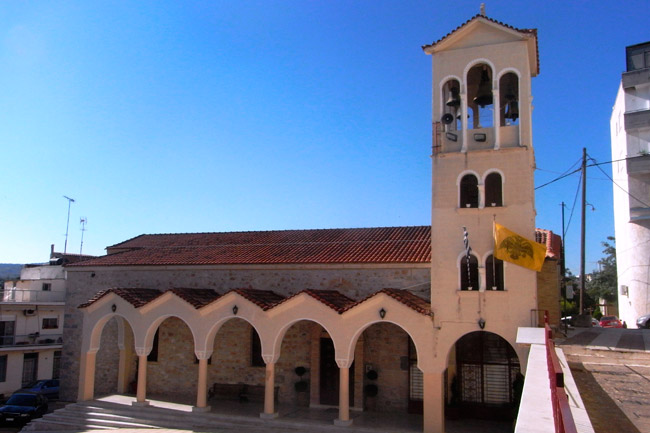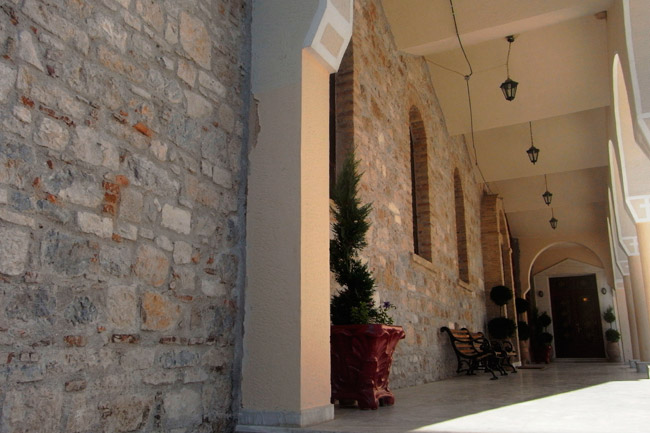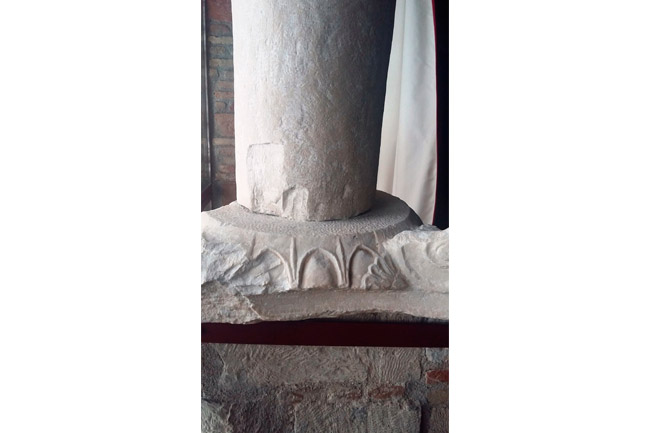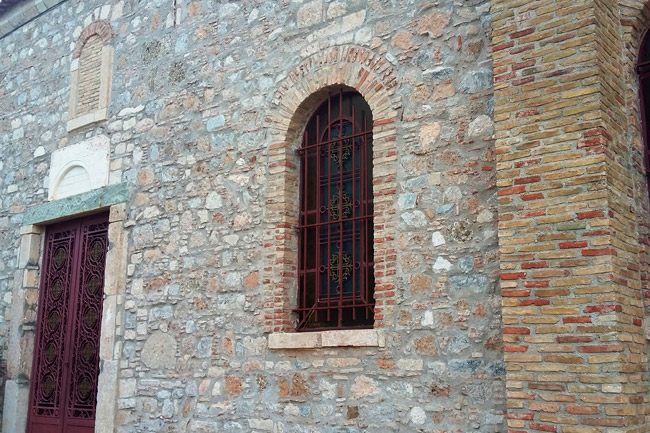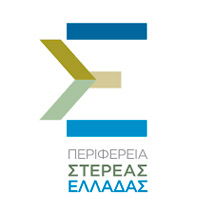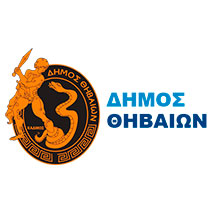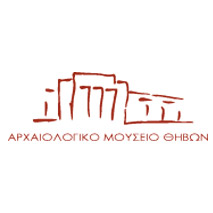PANAGIA LOTZIA
Dedicated to the Assumption of the Virgin Mary, located about 100m south of St. Gregory the Theologian, in the former settlement Armenia, almost opposite the baths of the early Christian period. We do not know its original construction date. During its construction, however, ancient columns and six Corinthian capitals were used. During the Frankish rule it was the metropolis of the Franks, thus coronations and other ceremonies of the western lords took place there.
In 1924, the coronation of the young Duke of Athens GuydelaRoche, who was the last Duke of the family, probably took place there. The two marble lions on the lower part of the wood-carved despotic throne of the temple must also be from this period, because of their resemblance to western models. Following the earthquakes of 1853 and 1914 it was severely damaged and the new arch had to be rebuilt. The final restoration of the church took place in 1920.
Church of ST. FOTEINI
One kilometre southeast of Thiva, on the road to Moschopodi, there is an eminent temple for Thiva, since it is where the inhabitants of the city used to celebrate Easter. A testimony of Pope Innocent III (1198-1210) and the name of a monk called Saint Foteinitis, indicate that in the place of the present church, there was once the catholic of a small monastery. The excavation of this first temple was carried out by Academician Orlandos Anastasios in 1940.
It had the form of a crossed-dome and is one of the first examples of a crossed-dome, as the prosthesis was attached to the NE side of the church. Orlandos dates the temple to the second half of the 10th century AD, while Prof. Bouras dates it in the 12th century. Part of the original temple is visible today, while the modern temple was built in 1958.
Church of St Gregory the Theologian
Near the junction of Dirkis and Pelopidou streets there is a small church of the 19th century, dedicated to Saint Basil. Beneath it was revealed the church of St Gregory the Theologian, a unique example of a sovereign chapel, of the type of the single-aisled vaulted basilica with a rectangular external arch. The visitor is informed by the preserved inscription, embedded in the eastern side of the modern temple, that it was built in the year 872/3, according to the inscription carved on the marble adornment, in the niche of the altar, at the expense of the state official, royal candidate Basil.
This temple had originally the same size as Panagia Skripou in Orchomenos. After its destruction, presumably in the 10th century, a small single-room church was built on its foundations in the 11th or 12th century. The burials are contemporary with it, one inside and others to the south and east. During the Ottoman period the temple was probably used as a mosque, as Ottoman tombstones were recovered from the site. The present 19th-century nave was built on the site of the 12th-century altar, and the name of the Saint Basil honoured in it probably derives from a misinterpretation of the inscription on the wall.
Tips
Near the junction of Dirkis and Pelopidou streets there is a small church of the 19th century, dedicated to Saint Basil. Beneath it was revealed the church of St Gregory the Theologian, a unique example of a sovereign chapel, of the type of the single-aisled vaulted basilica with a rectangular external arch.
